 W
WA baby gate or child safety gate is a protective barrier designed to prevent babies and toddlers from accessing areas of a home where they might be unsafe, such as stairways and kitchens. Baby gates are typically constructed of metal, plastic and/or wood, and can be expanded to fit in a range of doorway widths. They may be designed for use indoors or out, and may be either hardware or pressure-mounted.
 W
WBarrier boards are typically long plastic or wooden beams or metal plates used during road works and similar activities to cordon off areas, close roads or direct traffic.
 W
WA boom barrier, also known as a boom gate, is a bar, or pole pivoted to allow the boom to block vehicular or pedestrian access through a controlled point. Typically the tip of a boom gate rises in a vertical arc to a near vertical position. Boom gates are often counterweighted, so the pole is easily tipped. Boom gates are often paired either end to end, or offset appropriately to block traffic in both directions. Some boom gates also have a second arm which hangs 300 to 400 mm below the upper arm when lowered, to increase approach visibility, and which hangs on links so it lies flat with the main boom as the barrier is raised. Some barriers also feature a pivot roughly half way, where as the barrier is raised, the outermost half remains horizontal, with the barrier resembling an upside-down L when raised.
 W
WA Bremer wall, or T-wall, is a twelve-foot-tall (3.66 m) portable, steel-reinforced concrete blast wall of the type used for blast protection throughout Iraq and Afghanistan. The name is believed to have originated from L. Paul Bremer of the Coalition Provisional Authority, who was the Director of Reconstruction and Humanitarian Assistance for post-war Iraq, following the Iraq War of 2003, in the early years of the Iraq War.
 W
WA cable barrier, sometimes referred to as guard cable or wire rope safety barrier (WRSB), is a type of roadside or median safety traffic barrier/guard rail. It consists of steel wire ropes mounted on weak posts. As is the case with any roadside barrier, its primary purpose is to prevent a vehicle from leaving the traveled way and striking a fixed object or terrain feature that is less forgiving than itself. Also similar to most roadside barriers, cable barriers function by capturing and/or redirecting the errant vehicle.
 W
WA concrete step barrier is a safety barrier used on the central reservation of motorways and dual carriageways as an alternative to the standard steel crash barrier.
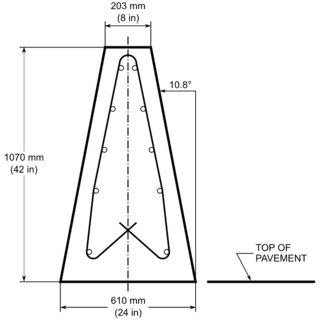 W
WA constant slope barrier is a traffic barrier made of reinforced concrete and designed with a single slope that is used to separate lanes of vehicular traffic. Its advantages compared to more complex shapes arise because its performance is not as affected by changes in the height of the roadbed during repaving.
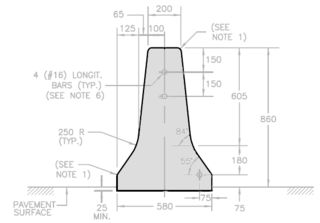 W
WThe F-shape barrier is a concrete crash barrier, originally designed to divide lanes of traffic on a highway. It is a modification of the widely used Jersey barrier design, and is generally considered safer.
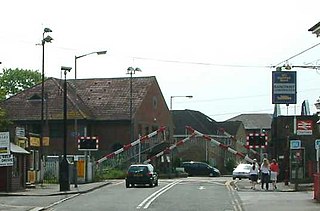 W
WA four-quadrant gate is a type of boom barrier gate protecting a grade crossing. It has a gate mechanism on both sides of the tracks for both directions of automotive traffic. The exit gates blocking the road leading away from the tracks in this application are equipped with a delay, and begin their descent to their horizontal position several seconds after the entrance gates do, so as to avoid trapping highway vehicles on the crossing. Many people consider four-quadrant gates to be safer than two-quadrant gates because they prevent drivers from illegally driving their vehicles around lowered gates to try to beat a train.
 W
WA Jersey barrier, Jersey wall, or Jersey bump is a modular concrete or plastic barrier employed to separate lanes of traffic. It is designed to minimize vehicle damage in cases of incidental contact while still preventing vehicle crossovers resulting in a likely head-on collision. Jersey barriers are also used to reroute traffic and protect pedestrians and workers during highway construction. They are named after the U.S. state of New Jersey which first started using the barriers as separators between lanes of a highway in the 1950s.
 W
WA safety barrier is a component which prevents passage into a dangerous area, commonly used to mitigate risk. Safety barriers may be hard barriers physically restricting passage or soft barriers that control circuits based on the presence of foreign bodies.
 W
WA safety net is a net to protect people from injury after falling from heights by limiting the distance they fall, and deflecting to dissipate the impact energy. The term also refers to devices for arresting falling or flying objects for the safety of people beyond or below the net. Safety nets are used in construction, building maintenance, entertainment, or other industries.
 W
WA school bus crossing arm is a safety device intended to protect children from being struck while crossing in front of a school bus. Typically, school bus crossing arms are wire or plastic devices which extend from the front bumper on the right side of the bus when the door is open for loading/unloading and form a barrier. The devices force children, who need to cross the road, to stand several feet in front of the bus itself before they can begin to cross the road. This ensures that the bus driver can see them as they cross, avoiding a common blind spot immediately in front of the bus, closest to the bumper. The crossing arm retracts flush against the bumper while not activated, such as when the bus is in motion.
 W
WA shark net is a submerged net placed around beaches to reduce shark attacks on swimmers. The majority of Shark nets used are gillnets which is a wall of netting that hangs in the water and captures the targeted sharks by entanglement. The nets in Queensland, Australia, are typically 186m long, set at a depth of 6 m, have a mesh size of 500 mm and are designed to catch sharks longer than 2m in length. Shark nets are not to be confused with shark barriers.
 W
WA sneeze guard, sneezeguard, or cough shield is an acrylic or glass screen designed to protect food or people from the exposure to respiratory droplets, which are dispensed when coughing, sneezing or even talking. Sneeze guards have been in use in restaurants for decades. With the rise of the COVID-19 pandemic, sneeze guards have been installed in public places like offices, schools and supermarkets to reduce the risk of infection through respiratory droplets.
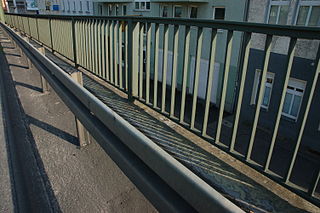 W
WTraffic barriers keep vehicles within their roadway and prevent them from colliding with dangerous obstacles such as boulders, sign supports, trees, bridge abutments, buildings, walls, and large storm drains, or from traversing steep (non-recoverable) slopes or entering deep water. They are also installed within medians of divided highways to prevent errant vehicles from entering the opposing carriageway of traffic and help to reduce head-on collisions. Some of these barriers, designed to be struck from either side, are called median barriers. Traffic barriers can also be used to protect vulnerable areas like school yards, pedestrian zones, and fuel tanks from errant vehicles.
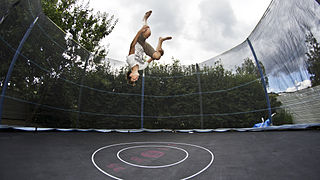 W
WA trampoline safety net enclosure is a trampoline accessory that significantly reduces the chance of fall off and frame impact injuries.
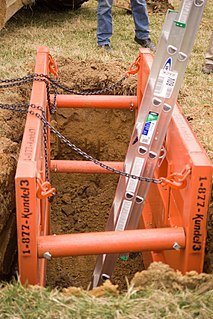 W
WTrench shields are steel or aluminum structures used for protecting utility workers while performing their duties within a trench and avoid cave-ins. They are customarily constructed with sidewalls of varying thicknesses held apart by steel or aluminum spreaders. Spreaders can be interchanged to match the width of the trench. The different materials and building designs lead to a variety of depth ratings, i.e. the depth of a trench that the shield can withstand a collapse without buckling. Depth ratings are determined by registered professional engineers.